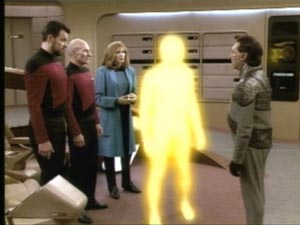
Whistleblower David Grusch, an alien representation that allegedly looks like the one seen by Jesse Marcel, “Project Blue Book” representation of Area 51 test craft
Regarding the import of the discovery of a mere microbe on a planet other than earth, Gentry Lee, former Chief Systems Engineer at NASA’s Jet propulsion Lab and narrator of the documentary “Are We Alone” stated “… it would be the biggest scientific discovery in history.”[1]
Now the claim is being made that not merely microbes but entire complex multi-cellular humanoid aliens in space craft have come to earth, and have been doing so for at least 90 years. For such an earth shattering announcement, the media reaction has been a rather ho-hum, nothing special, business as usual type of response. A number of big name media outlets such as the New York Times and the Washington Post were offered the story but passed on publishing it.
The story I’m referring to is that of the “whistleblower” allegations made that the U.S. government has in its possession alien (as in not from earth) space craft and the (dead) bodies of the crew that piloted the alleged UFO – which the military now calls UAPs – Unidentified Aerial Phenomenon – to avoid the extra-terrestrial (ET) connotations inherent in “UFO.” I put whistleblower in quotes, because for reasons which I will describe below, I am confident the U.S. government does not have what is claimed in the allegations, so that makes me wonder what the “whistleblower” is up to. Is he being a good g-man and running a black op for the elites? Is he really blowing the whistle on the government? Or has he failed a confidence test the government put him through? Or is he possibly just a stooge for satan? I’ll give my conclusion below, but first let me give some background and remove the smoke and mirrors so we can clearly see what’s fact and what’s fiction and judge accordingly. Continue Reading



-500.jpg)






